On the morning of Jan. 14, 2014, Essance Sosa was sitting on the gym bleachers at Berrendo Middle School in Roswell, New Mexico, when she heard what sounded like balloons popping. The gym went silent. She didn’t know the pops were gunshots, and neither did many of the kids around her. “Is this a drill?” Sosa thought. Then, someone moaned in pain.
“I just saw blood everywhere,” Sosa, then 12, told a reporter that day. “Everyone started screaming and running.” Two of her classmates were shot, an 11-year-old boy and a 13-year-old girl. Both survived.

Sosa is 17 now, and the memory of her school shooting haunts her. She struggles in crowds. Loud, unexpected noises make her nervous. For years, she talked herself out of the fear that she might be in another school shooting: “It won’t happen in the same place twice,” she would say. But ever since the Feb. 14 mass shooting at Marjory Stoneman Douglas High School in Parkland, Florida, Sosa has felt on edge, like it could actually happen to her again, particularly since her high school — like more than 1,000 others nationwide — received threats after Parkland. In a recent survey, more than one-third of teens said they now “worry a lot” — at least twice as much as adults — about being the victim of a mass shooting.
Bailey Nelson, 18, recently listened to her classmates in Huntington Beach, California, ask a teacher what they should do in case of a shooting, including how they could avoid getting trapped inside a classroom. "There are people at our school who are scared it's going to happen here," said Nelson, who previously attended a high school in Marysville, Washington, where a student shot and killed four others in 2014. "I used to think that was irrational. I used to think that was part of my PTSD, but now I think it makes sense they're scared."
In the four years between the shooting at Marjory Stoneman Douglas and those in Marysville and Roswell, there have been hundreds of school shootings, yet none has affected Americans quite like the massacre in Parkland that left 17 dead. Parkland’s aftermath has prompted the strongest and most sustained push for gun control and reform since the slaughter of 26 elementary schoolchildren and teachers in Newtown, Connecticut, in December 2012. And it’s all because of Parkland’s teen survivors, who’ve brought their emotional testimonies to social media and news channels to create the #NeverAgain movement.
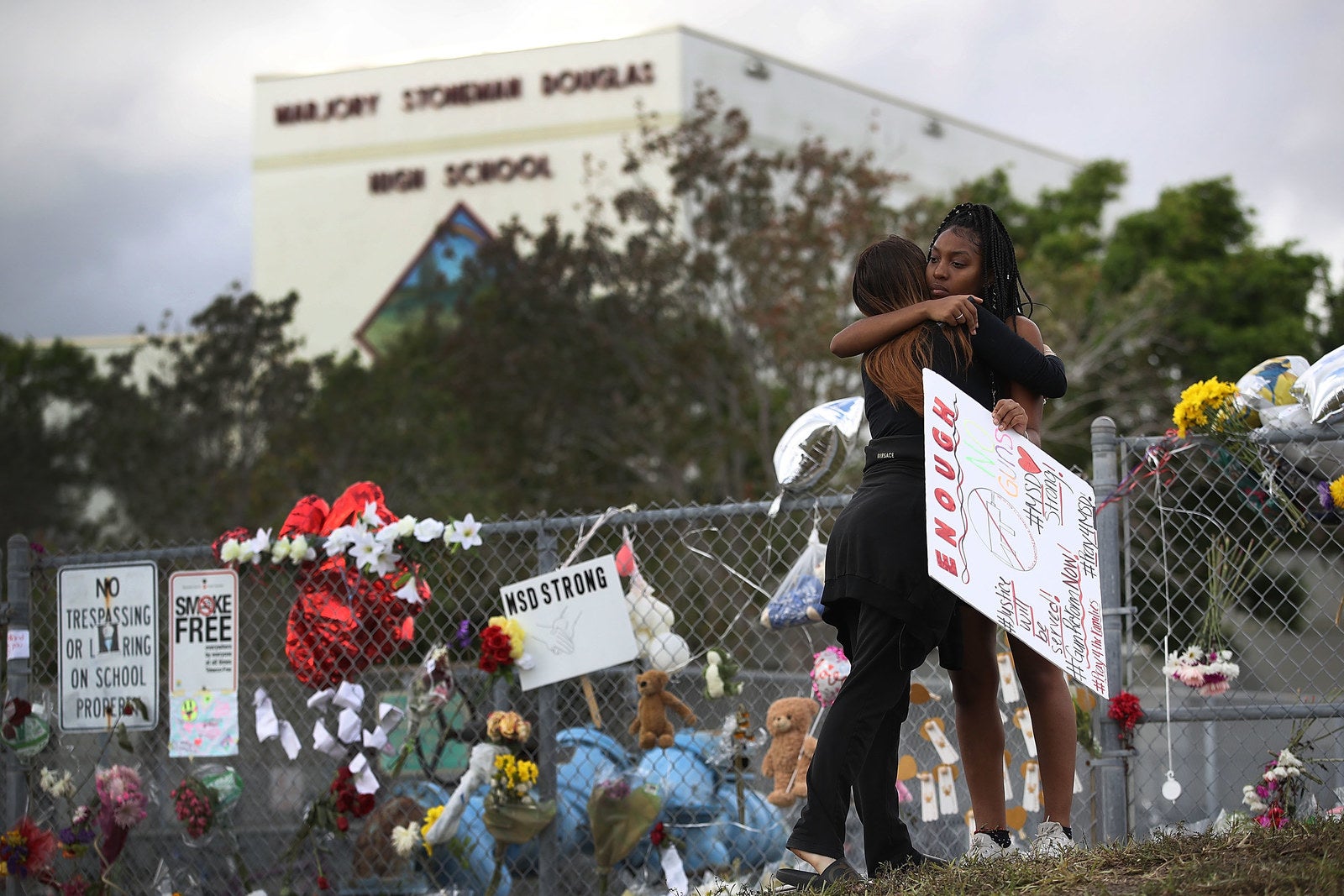
The country has been captivated by these survivors, their stories, and the harrowing footage of the shooting taken from their phones. Already, Florida has signed into law some moderate new restrictions on rifles, and students staged walkouts nationwide on March 14. Larger demonstrations are planned for March 24 and April 20, the anniversary of the Columbine shooting in Littleton, Colorado. Oprah Winfrey, George and Amal Clooney, and Twitter CEO Jack Dorsey have pledged to donate hundreds of thousands of dollars to help the students organizing the marches.
Meanwhile, school is back in session in Parkland. The Florida teenagers who’ve endured unfathomable violence must return to simply being students, at least between school bells. And the only people who can understand this impossible transition back to “normal” life are other survivors of recent school shootings — people like Sosa and Nelson.
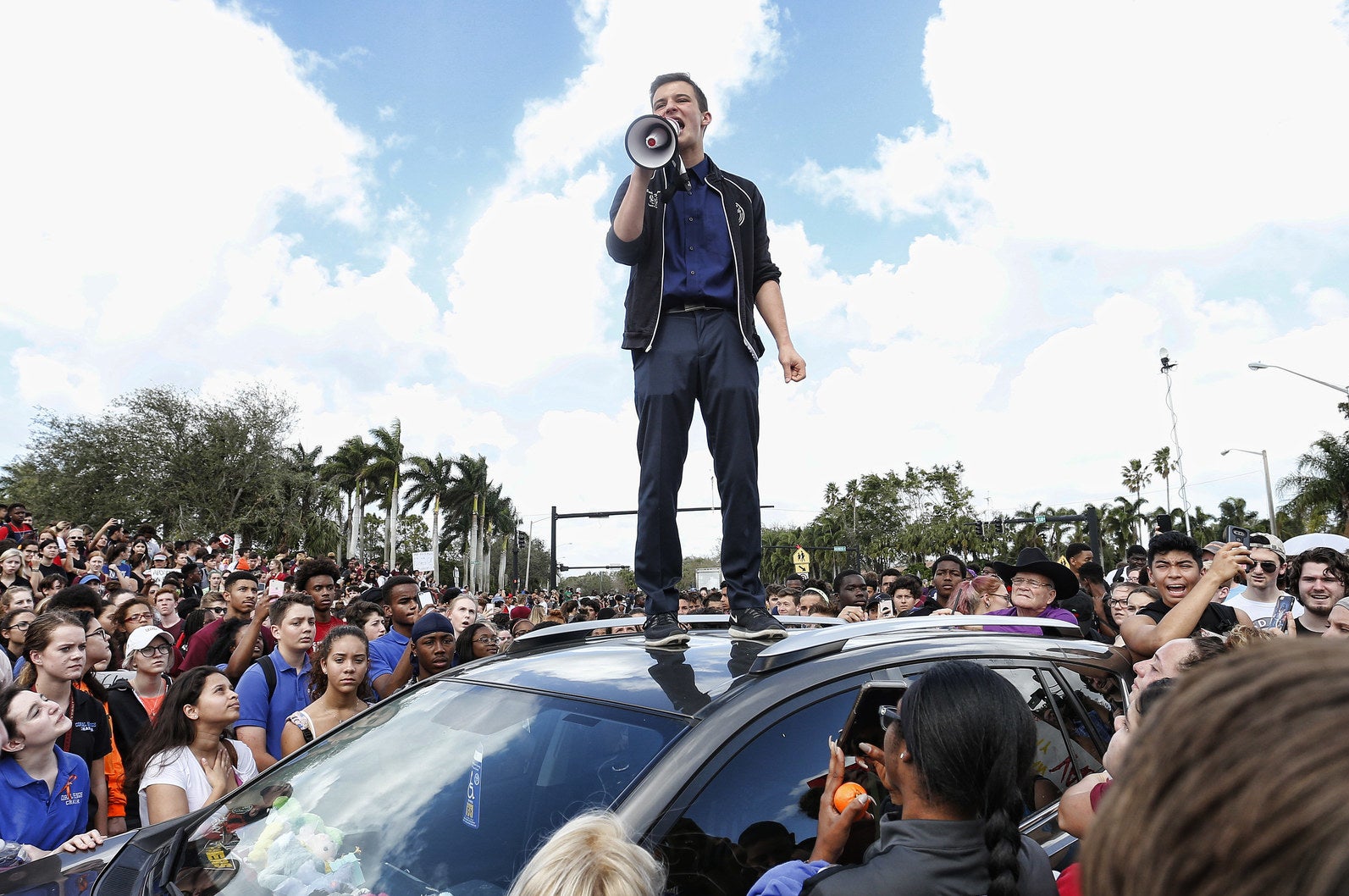
But after Parkland, there’s an assumption that every outspoken teenager who’s made it through a school shooting will join their fellow survivors, fists up for gun control. Yet when you ask survivors in other parts of the country what they think of this new wave of activism, you may find more disconnection than solidarity. Young survivors are products of their communities. Parkland is a liberal, well-educated, upper-middle-class pocket of a swing state — the perfect tinderbox for a youth-led gun control revolution. Kids in other parts of the country have experienced school shootings, and the aftermaths, differently.
Some survivors have been energized by Parkland. They want to participate in activism now because their communities didn’t rise up when they were the sites of attacks years ago.
Brenton Cooley, now 20 and attending community college in Marysville, was always bothered that nothing happened after the October 2014 shooting at Marysville-Pilchuck High School. There was no momentum toward activism, Cooley said, not even a plaque in the cafeteria where Cooley saw the shooting happen. He said that Marysville-Pilchuck wanted to get students back to their normal routines after a week off from classes, offering private counseling if needed. "They just put it in the closet and locked it up," Cooley said. "They don't acknowledge it, ever."
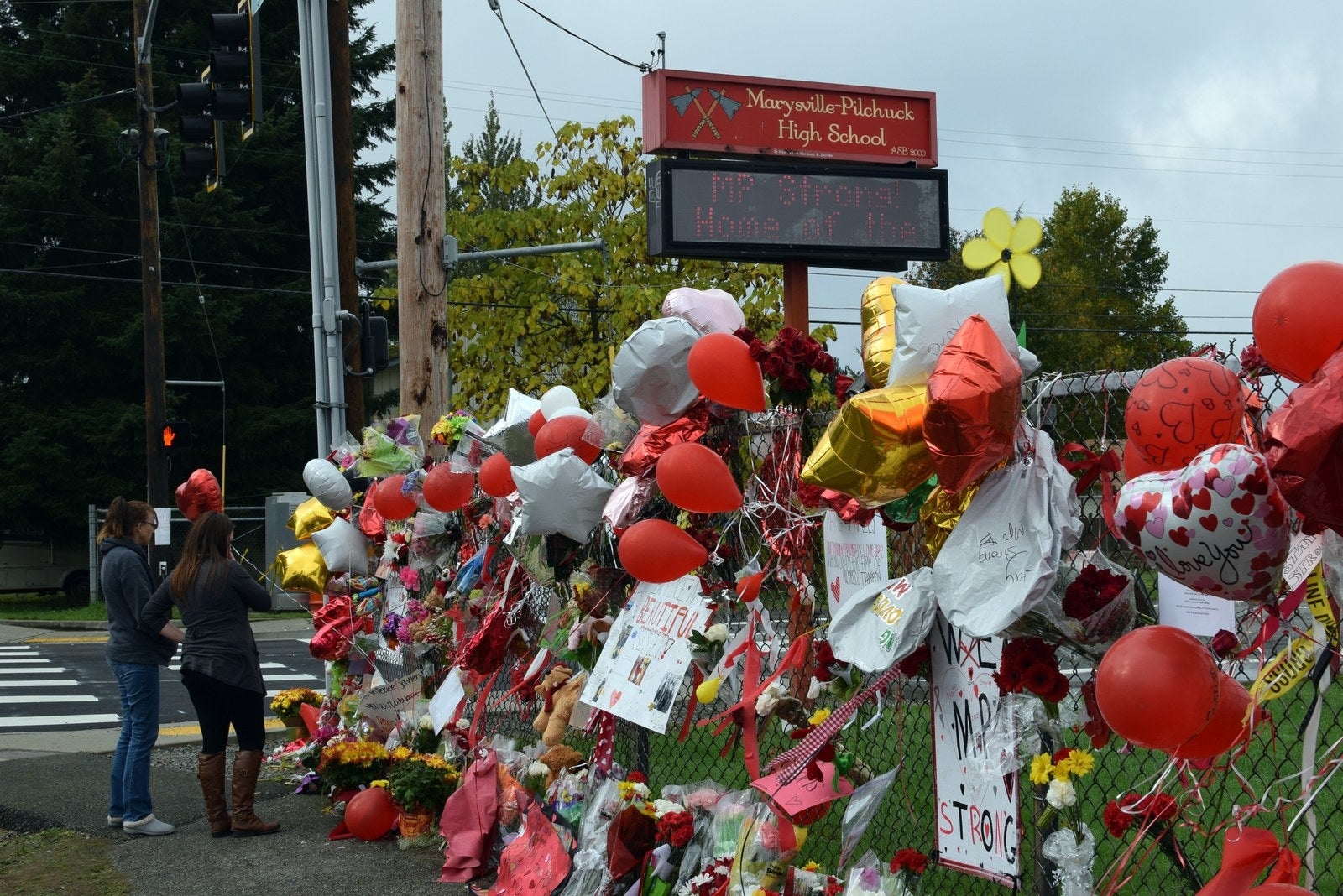
It took three years for Cooley to talk about what happened that day, even with his family. "I don't watch the news because of it," Cooley said. "I can't, because ever since that day, I suffer from PTSD, so rehearing about school shootings and just hearing it on the news — it just throws me back to the day it happened. It puts me back in that place. It sucks. It just sucks." Cooley finally began opening up after a friend sent him videos of other classmates talking about their memories of the slain students. Now, because he never got to march after the shooting at his school, he's planning to attend the Seattle offshoot of the March for Our Lives event this month.
But other young people who’ve survived gun violence won’t be marching for their lives.
“Our town is really small,” Sosa said, when asked whether she has any plans to protest. “No one at all has mentioned anything like that. It’s not that no one here cares enough. We’re just...small.” Roswell has fewer than 50,000 residents. Its county heavily skews Republican. Even if there were a walkout planned at her high school, Sosa said, her parents wouldn’t want her missing class for it.
There may be an assumption that living through a school shooting can transform a young person's views — making them more anti-gun — but it's not that simple.
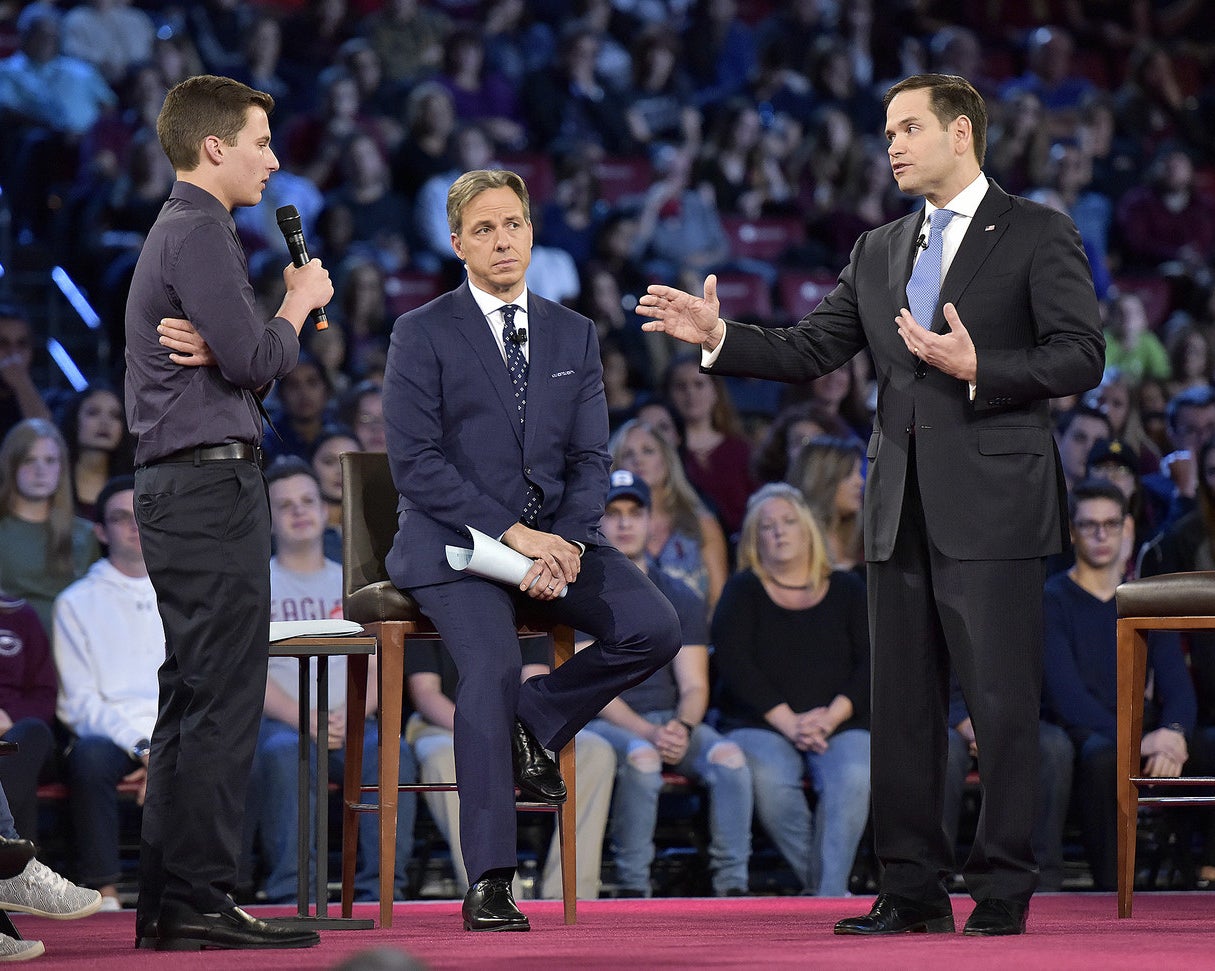
Today, Sosa doesn’t believe gun control is the best way to stop school shooters; instead, she strongly supports increased mental health services and background checks. And while the Berrendo shooting may have changed her personal political perspective, it didn’t change her town’s views. It simply wasn’t a political event; “gun control never came up,” Sosa said. Rather, her school focused on counseling its students and bussing in survivors of another school shooting that occurred a month earlier in Colorado to console them. Communities took similar, nonpartisan approaches following attacks at Marysville-Pilchuck; at Madison Junior/Senior High School in Middletown, Ohio, where a 14-year-old shot and wounded two students in a lunchroom; and at Freeman High School in Rockford, Washington, where one student was killed and three others injured.
Syrena Wilson was a junior at Madison when the shooting happened two years ago. Now a freshman at Bowling Green State University, she isn't sure if she'll make it to the marches, simply because she doesn't know how much schoolwork she'll have at the time — including an upcoming class project about an event that changed her life. For the project, Wilson chose to focus on the shooting. But as life-changing as it was, Wilson said, there wasn't any student-led activism in the aftermath like the kind seen in Parkland, partly because of Madison’s conservative community, where kids feared sharing their views on controversial topics like gun control.
"They're afraid they won't be accepted by friends and family," Wilson said. "If people, specifically parents, could be more open and less controlling on their kids' views on certain aspects, then more and more people would be open to expressing their views."
As of last fall, 16-year-old Christina Morrison considered herself in favor of people owning rifles, and even of schools arming teachers. That started to change after the Sept. 13, 2017, shooting at her school, Freeman High School in Washington. The student shooter came armed with an AR-15, but it jammed, so he picked up a handgun he’d also brought to campus.
As in Roswell, Marysville, and Middletown, there was no major demonstration or sweep of activism in Rockford, where Morrison is now a junior at Freeman. Calls for gun control last fall would've been seen as politicizing the tragedy, Morrison said. Instead, the rural community rallied under the banner of "Freeman Strong," raised funds for the victims' families, and prayed together before school. Students like Michael Coumont, a senior on the basketball team, created their own small memorials, like writing the name of their lost classmate, Sam Strahan, on his game shoes.
"I understand the message students are trying to get to lawmakers, but I don’t really see a walkout at my high school affecting much."
But as Morrison saw more shootings in the news, her opinions shifted. By Feb. 14, the day of the Parkland shooting, she tweeted, "I used to be pro-gun. But now, everyday, I wish they were never invented." She will not march on March 24, because there isn't a march happening near her, but she is helping organize a walkout for April 20. It's controversial in a conservative school like hers, she said. Some even call the walkouts "anti-American, which I disagree with. It's not anti-American to do something; it's our constitutional right to speak up."
Coumont isn't sure if he'll join Morrison’s walkout at Freeman. "I understand the message students are trying to get to lawmakers, but I don’t really see a walkout at my high school affecting much," he said. Morrison understands that even those who've lived through a shooting may not feel compelled to join a march. That's fine, she said, but "then you need to explain what you do want to have happen.”
A post-Parkland poll of 20,975 adults and 733 kids ages 13–17 by SurveyMonkey found that teenagers were more likely than adults to believe the student protests will lead to meaningful changes, but still 41% of teens were skeptical. Teens were also more likely than adults to have an unfavorable view of the National Rifle Association, but 36% approved of the influential gun group, and more than half of teenagers believed having a gun in the house makes their home safer.
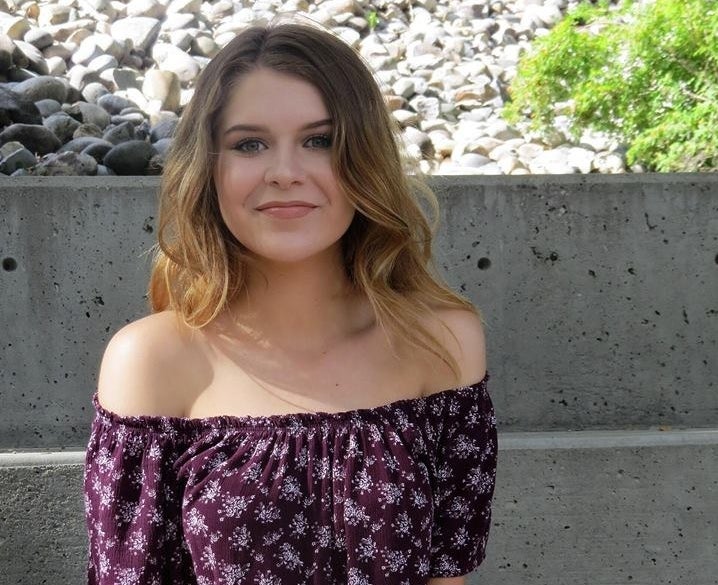
Aztec, New Mexico, is another conservative town — the kind of place where people grew up believing they were safer with guns than without, and where boys would proudly install rifle racks on the backs of their trucks, said Bryn Divine, an 18-year-old senior at Aztec High School. In December 2017, two months before Parkland, a shooter at Aztec killed two of Divine’s classmates with a handgun.
Divine has noticed that since the shooting, some of her classmates are “willing and open to taking away certain guns, like semiautomatic weapons.” But for the most part, the town wants to maintain its way of life. Its response to the shooting has been to bolster security — to increase the number of full-time security guards on campus, for example. Many in the broader Aztec community, including Divine, are advocating for teachers to be armed.
But considering how close in time that Aztec and Parkland's attacks were to each other, Divine is grateful that her school didn’t stay in the news for very long. “I didn’t want our story as a community to be used to take away semiautomatic or automatic weapons. I didn’t want us to be what Parkland has become. It sounds so terrible, but they have become a political battleground for gun control. It makes me so, so sad to watch.”
"I didn’t want our story as a community to be used to take away semiautomatic or automatic weapons."
The shootings at Aztec High School, Freeman High School, Madison Junior/Senior High School, Marysville-Pilchuck High School, and Berrendo Middle School are not widely remembered by the country. They fall among the hundreds of school shootings in recent years, though the precise number varies. Everytown for Gun Safety, a gun control advocacy group, has tracked 301 instances of a gun being fired in the vicinity of a school since 2013. The Gun Violence Archive, a nonprofit that began tracking shootings in 2014, says there have been 239 school shootings, resulting in 438 people shot and 138 of them killed. A more conservative estimate is on Wikipedia, where a compilation of news reports tallies 119 shootings on school and college campuses since 2013, resulting in 104 deaths and 207 injuries.
Most of the time when there is a school shooting, it's not like Parkland; fewer people are killed or injured, though it can produce the same trauma for survivors, knowing what it sounds like to hear gunshots ricochet down a school hallway.
But it’s not just Parkland’s body count that’s made it the shooting to catalyze a new, more progressive generation. Rather it’s Parkland’s continued presence in the national news, driven by its survivors, that makes it an anomaly. And the students aligned with the Parkland teens are using that to their advantage.
Nelson is helping organize a march where she lives now, in Huntington Beach. She suggested Parkland is finally spurring momentum to change gun laws because "this is the last straw. But our school was just a first straw," she said.
"We didn't think this would become common at all," Nelson continued. "We just thought that it wouldn't happen again — or at least not as often as it has." ●

